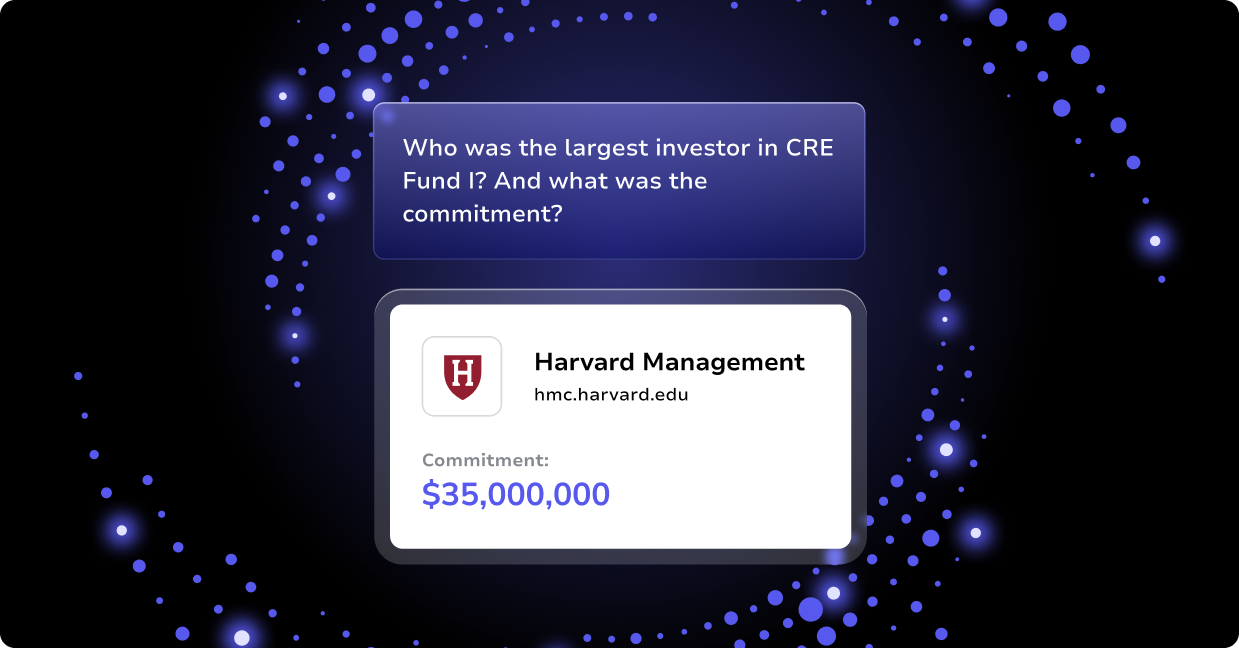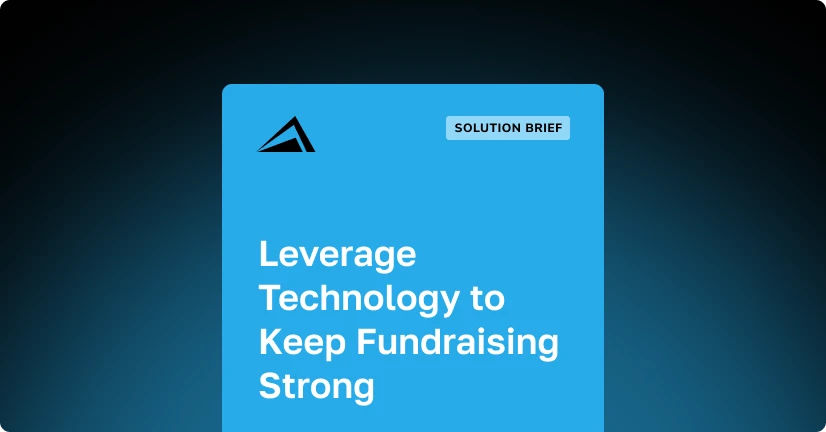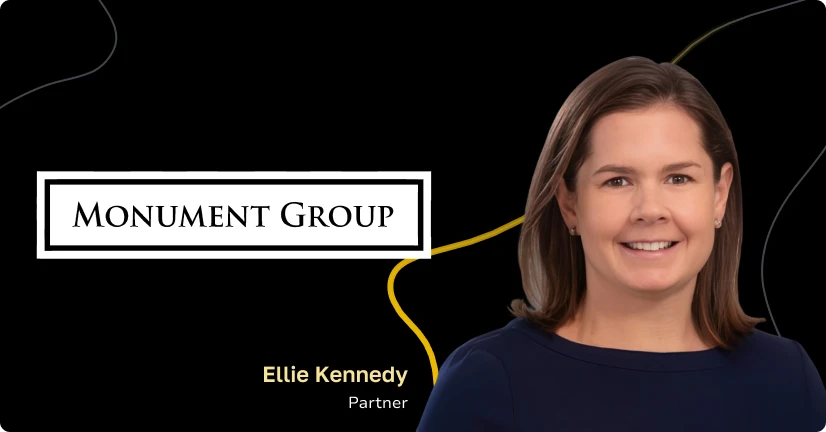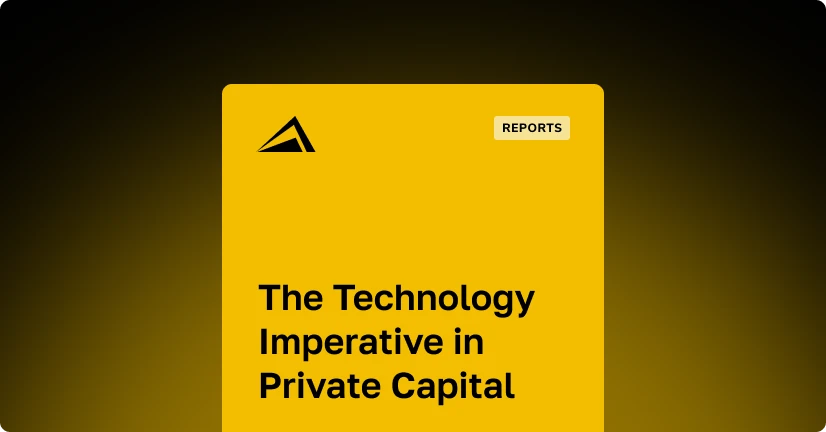
“Speed has become more valuable than capital.”
Wise words from Henri Pierre-Jacques of Harlem Capital.
That being the case, it’s more important than ever for PE firms to consider how to decrease a private equity fundraising timeline.
Obviously, your success in accelerating the process depends, in part, on factors outside your control, but let’s talk about the things that give you the greatest likelihood of success and which you can control.
Much of the world’s productivity enhancements in the last twenty-five years have become technology, and that should be the first place for you to look, too.
In particular, firms should prioritize the technology that is closest to their most important workflows: raising capital and generating outsized returns.
Three ways to decrease a Private Equity fundraising timeline
1. Develop a deep pipeline and focus quickly on the parts of it most likely to convert.
Start wide and use data to find prospects. Believe it or not, there are investors you’d like to talk to and who would like to talk to you, but neither of you know who the other is (yet!).
Technology’s role is tremendously powerful in this arena and takes shape in two key ways:
1. The data that will help to uncover who those investors are, why they could be a fit, and who you’ll need to interact with. You will almost certainly have to pay for this sort of data and you’ll get what you pay for. Remember that speed has become more valuable than capital, so pay for it and get going.
2. Applications that will help to leverage time to interact with them, keep track of progress, generate reminders, and show engagement activity that will help to inform conversion likelihood.
Turns out those two forms of technology are best used together and doing so will help to inform where conversion is most likely, and 1) which characteristics of the investor and 2) efforts of yours lead to that.
Once you figure this out, find out how to do more of that and do it faster, and technology is the way to do that.
Here are some questions to help get that train of thought going:
- Who are my top capital raisers?
- What regions are we most successful in?
- Where are our best introductions coming from?
- What are the characteristics of our most committed LPs?
The answers will help you focus your efforts and increase productivity.
2. Automate your processes.
Even simple tasks take time—hours that could be better spent elsewhere.
Consequently, you should automate common workflows like broad email updates, the creation and distribution of PPMs, and the reporting you’ll use to keep track of the process.
In terms of reporting/analysis: account for things you know now that you’ll want to know, but plan to want to report in ways you don’t yet know about.
You should also review ownership/coverage of the prospect universe (including existing LPs) within your team. Then, after completing that review, you can divide and conquer.
Measuring engagement and success will be of help here, too; it will further inform follow-up activities, craft talking points, and focus the activities that offer the least amount of leverage on the things that deserve it and which have the highest likelihood of converting.
3. Prepare key marketing materials, track record, and benchmarks in advance.
For me, just ten or fifteen years ago, the thought of manual but repetitive tasks like these was nauseating.
I’m here to lobby for manual efforts like these being a crime in today’s world.
If for no reason other than that we’ve worked to apply technology to steps like these and you’re wasting precious time given the complexity that comes with manual efforts in this area.
And, of course, when you are fundraising, forward momentum matters. The longer it takes you to close your fund, the less favorably you will be viewed by LPs.
Be sure to have these marketing materials prepped:
- PPMs
- Presentation Deck
- Due Diligence Questionnaires
- Deal Attribution Analysis
- Team Background
- Track Record
- ESG Policy Statements
With these items completed, polished, and easily accessed, you can ensure there is no long gap between request and response.
Recommendation: Evaluate your internal investor relations capabilities. It may be that you can shorten your fundraising timeline by enlisting the assistance of a placement agent.
The Right Tools for PE Fundraising
Of course, your team will be best able to improve its fundraising performance if it is using solutions designed for PE firms.
From our solution, our leading-edge GP-LP engagement platform, the Altvia suite of purpose-built tools has all the necessary functionality in systems that are also intuitive and easy to use. Click here to see them in action.
Wise words from Henri Pierre-Jacques of Harlem Capital.
That being the case, it’s more important than ever for PE firms to consider how to decrease a fundraising timeline.
Obviously, your success in accelerating the process depends, in part, on factors outside your control, but let’s talk about the things that give you the greatest likelihood of success and which you can control.
Much of the world’s productivity enhancements in the last twenty-five years have become technology, and that should be the first place for you to look, too.
In particular, firms should prioritize the technology that is closest to their most important workflows: raising capital and generating outsized returns.
Three ways to decrease a Private Equity fundraising timeline
1. Develop a deep pipeline and focus quickly on the parts of it most likely to convert.
Start wide and use data to find prospects. Believe it or not, there are investors you’d like to talk to and who would like to talk to you, but neither of you know who the other is (yet!).
Technology’s role is tremendously powerful in this arena and takes shape in two key ways:
1. The data that will help to uncover who those investors are, why they could be a fit, and who you’ll need to interact with. You will almost certainly have to pay for this sort of data and you’ll get what you pay for. Remember that speed has become more valuable than capital, so pay for it and get going.
2. Applications that will help to leverage time to interact with them, keep track of progress, generate reminders, and show engagement activity that will help to inform conversion likelihood.
Turns out those two forms of technology are best used together and doing so will help to inform where conversion is most likely, and 1) which characteristics of the investor and 2) efforts of yours lead to that.
Once you figure this out, find out how to do more of that and do it faster, and technology is the way to do that.
Here are some questions to help get that train of thought going:
- Who are my top capital raisers?
- What regions are we most successful in?
- Where are our best introductions coming from?
- What are the characteristics of our most committed LPs?
The answers will help you focus your efforts and increase productivity.
2. Automate your processes.
Even simple tasks take time—hours that could be better spent elsewhere.
Consequently, you should automate common workflows like broad email updates, the creation and distribution of PPMs, and the reporting you’ll use to keep track of the process.
In terms of reporting/analysis: account for things you know now that you’ll want to know, but plan to want to report in ways you don’t yet know about.
You should also review ownership/coverage of the prospect universe (including existing LPs) within your team. Then, after completing that review, you can divide and conquer.
Measuring engagement and success will be of help here, too; it will further inform follow-up activities, craft talking points, and focus the activities that offer the least amount of leverage on the things that deserve it and which have the highest likelihood of converting.
3. Prepare key marketing materials, track record, and benchmarks in advance.
For me, just ten or fifteen years ago, the thought of manual but repetitive tasks like these was nauseating.
I’m here to lobby for manual efforts like these being a crime in today’s world.
If for no reason other than that we’ve worked to apply technology to steps like these and you’re wasting precious time given the complexity that comes with manual efforts in this area.
And, of course, when you are fundraising, forward momentum matters. The longer it takes you to close your fund, the less favorably you will be viewed by LPs.
Be sure to have these marketing materials prepped:
- PPMs
- Presentation Deck
- Due Diligence Questionnaires
- Deal Attribution Analysis
- Team Background
- Track Record
- ESG Policy Statements
With these items completed, polished, and easily accessed, you can ensure there is no long gap between request and response.
Recommendation: Evaluate your internal investor relations capabilities. It may be that you can shorten your fundraising timeline by enlisting the assistance of a placement agent.
The Right Tools for Private Equity Fundraising
Of course, your team will be best able to improve its private equity fundraising performance if it is using solutions designed for PE firms.
From our solution, our leading-edge GP-LP engagement platform, the Altvia suite of purpose-built tools has all the necessary functionality in systems that are also intuitive and easy to use.




